
Tidy
Lyric
2017
5 months
- Researching
- Designing
- Prototyping
- Matt–Head of product
- Sunny–Engineer
- Kenny–Head of operations
Lyric was adding new buildings and cities monthly. In doing so, the operational teams & tools were falling behind. To continue scaling the company while keeping the overall experience standards high, we needed to review & improve each function. My team honed in on the cleaning & maintaining of rooms.
Initially, we adopted procedures similar to that of a hotel. However, Lyric was a different setup, both in the types of people we hired and the overall processes. We needed a solution that was flexible enough to cater to each unique building, but still able to be run by a single team at our headquarters.
research
Matt (Head of product) and I spent a few weeks researching. This included, but was not limited to:
- Interviewing team members, specifically those with prior hospitality or operations experience on previous contract-based systems, the pros, the cons, and changes they would've made.
- Interviewing team members currently running the on-premise operations. Lyric had tried a few different cleaning and maintenance systems by this point, so we wanted to understand why each was chosen, what worked well and what didn't .
- Visited 4 different cities & 6 different buildings to better understand the differences in buildings and suites
- While visiting these buildings we spoke with on-site staff, cleaning managers and the cleaning staff
- Performed sketching exercises with Kenny, the Head of Operations at Lyric. At his former workplace he helped build a similar tool.
- We reviewed available off the shelf solutions and consulted the team about which options had been tried. At one point we tried implementing one of these solutions in a specific building, but found it was far too strict in its process compared to the standards set by our operations team.
Systems
Tidy was a complex project. It involved a number of individuals, both internal and external. It required multiple levels of setup, real-time verification, and daily scheduling. The cleaners were contract and had other clients before and after Lyric. In addition, there were third-party tooling we needed to integrate in. The biggest was Salesforce, which was being used to setup all of Lyric's suites. I could go on, but hopefully you get the idea. A lot of moving parts.
One system I spent a considerable amount of time on was template creation.
At this time we had hundreds of suites across 20 or so properties in 5 cities. While there were similarities across these suites, each building presented unique constraints. For instance, in certain buildings we'd be storing all the cleaning & maintenance equipment in an hallway closet. In another we'd be storing them in each suite. In one building there was an additional alcove that needed attention while it was absent in every other building.
Also, the overall design, including the furniture, was slightly different for suites—both at each building and each type of suite. And so, keeping the right levels of inventory and cleaning instructions down to the room was important.
Anyways, after spending time diagramming and charting out the situation, I proposed a tiered templating system. This system allowed for a cascading of settings, where at the highest level, a setting would be in effect for all suites. However, if a specific building or suite needed a different setting value, one could go a step lower and make the modification to that specific entity.
In my mind, this allowed the system to scale effectively, provide more guardrails for the operations team, and was easier to learn for new team members.
Tidy was a complex project. It involved a number of individuals, both internal and external. It required multiple levels of setup, real-time verification, and daily scheduling. The cleaners were contract and had other clients before and after Lyric. In addition, there were third-party tooling we needed to integrate in. The biggest was Salesforce, which was being used to setup all of Lyric's suites. I could go on, but hopefully you get the idea. A lot of moving parts.
One system I spent a considerable amount of time on was template creation.
At this time we had hundreds of suites across 20 or so properties in 5 cities. While there were similarities across these suites, each building presented unique constraints. For instance, in certain buildings we'd be storing all the cleaning & maintenance equipment in an hallway closet. In another we'd be storing them in each suite. In one building there was an additional alcove that needed attention while it was absent in every other building.
Also, the overall design, including the furniture, was slightly different for suites—both at each building and each type of suite. And so, keeping the right levels of inventory and cleaning instructions down to the room was important.
Anyways, after spending time diagramming and charting out the situation, I proposed a tiered templating system. This system allowed for a cascading of settings, where at the highest level, a setting would be in effect for all suites. However, if a specific building or suite needed a different setting value, one could go a step lower and make the modification to that specific entity.
In my mind, this allowed the system to scale effectively, provide more guardrails for the operations team, and was easier to learn for new team members.
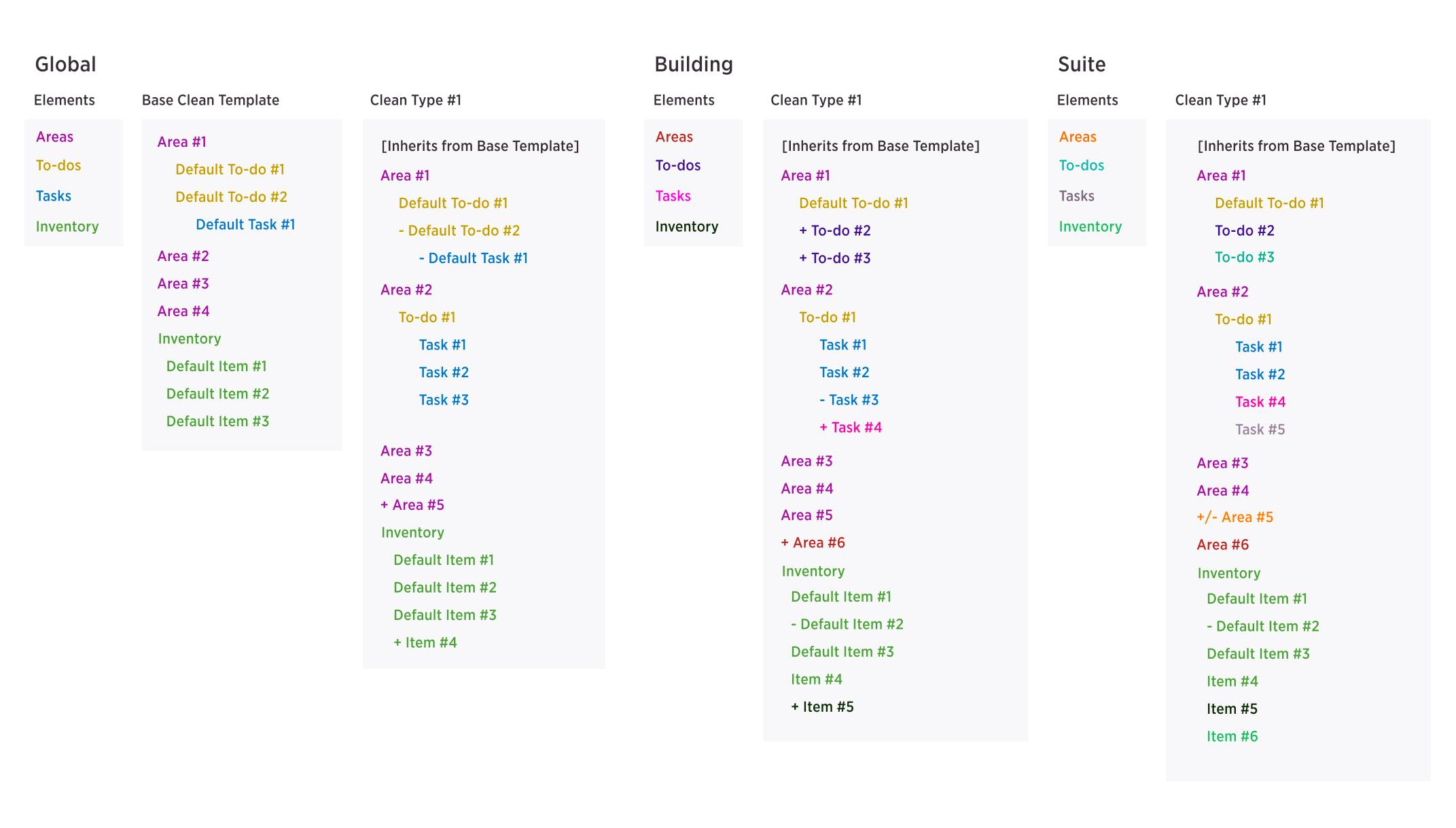
A few other systems were the on-site mobile cleaning application and the headquarter verification application. I worked with Matt, Kenny and other members of the team to come up with the right labels, hierarchy and UI to make the complex a little less so.
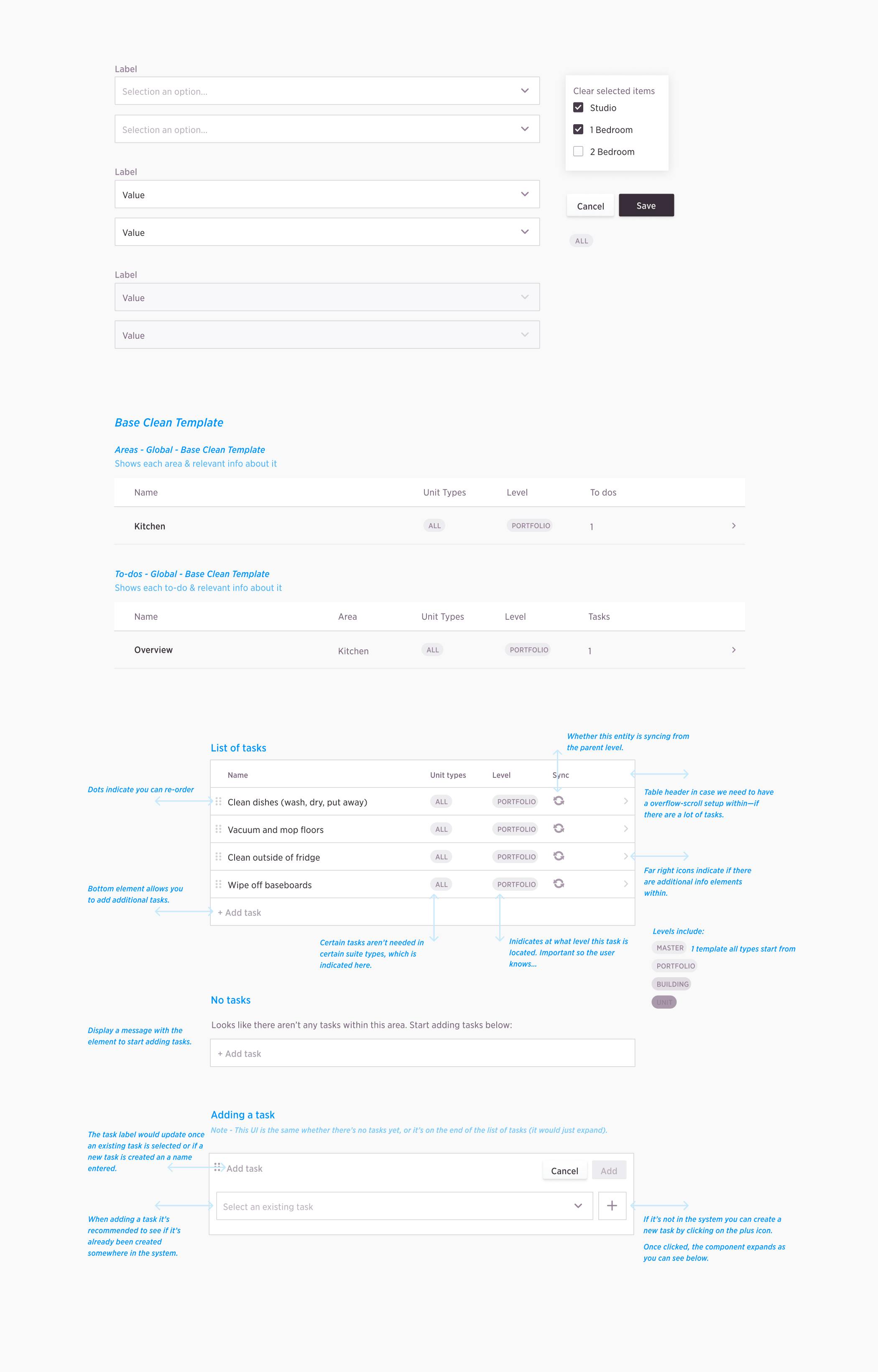
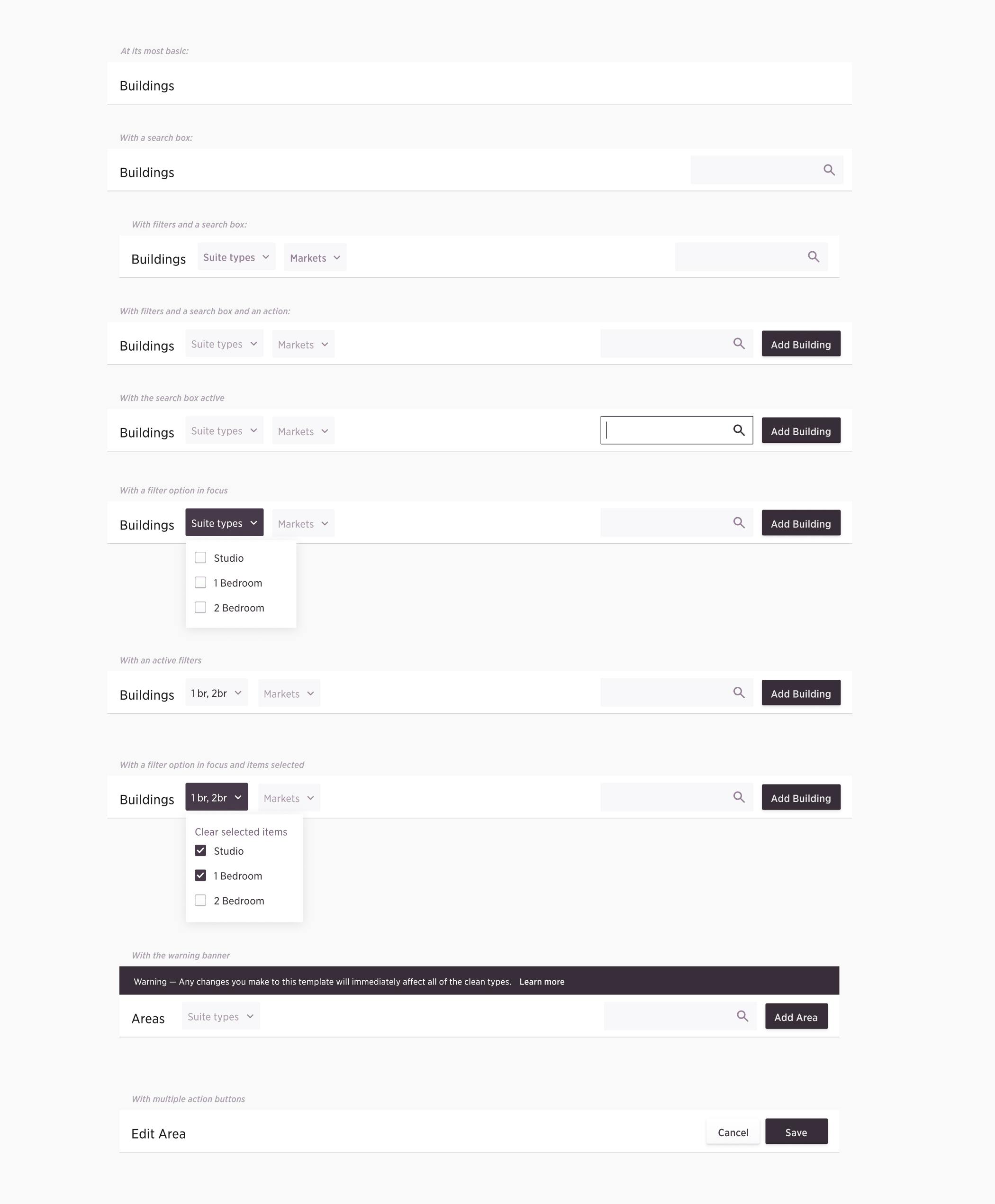
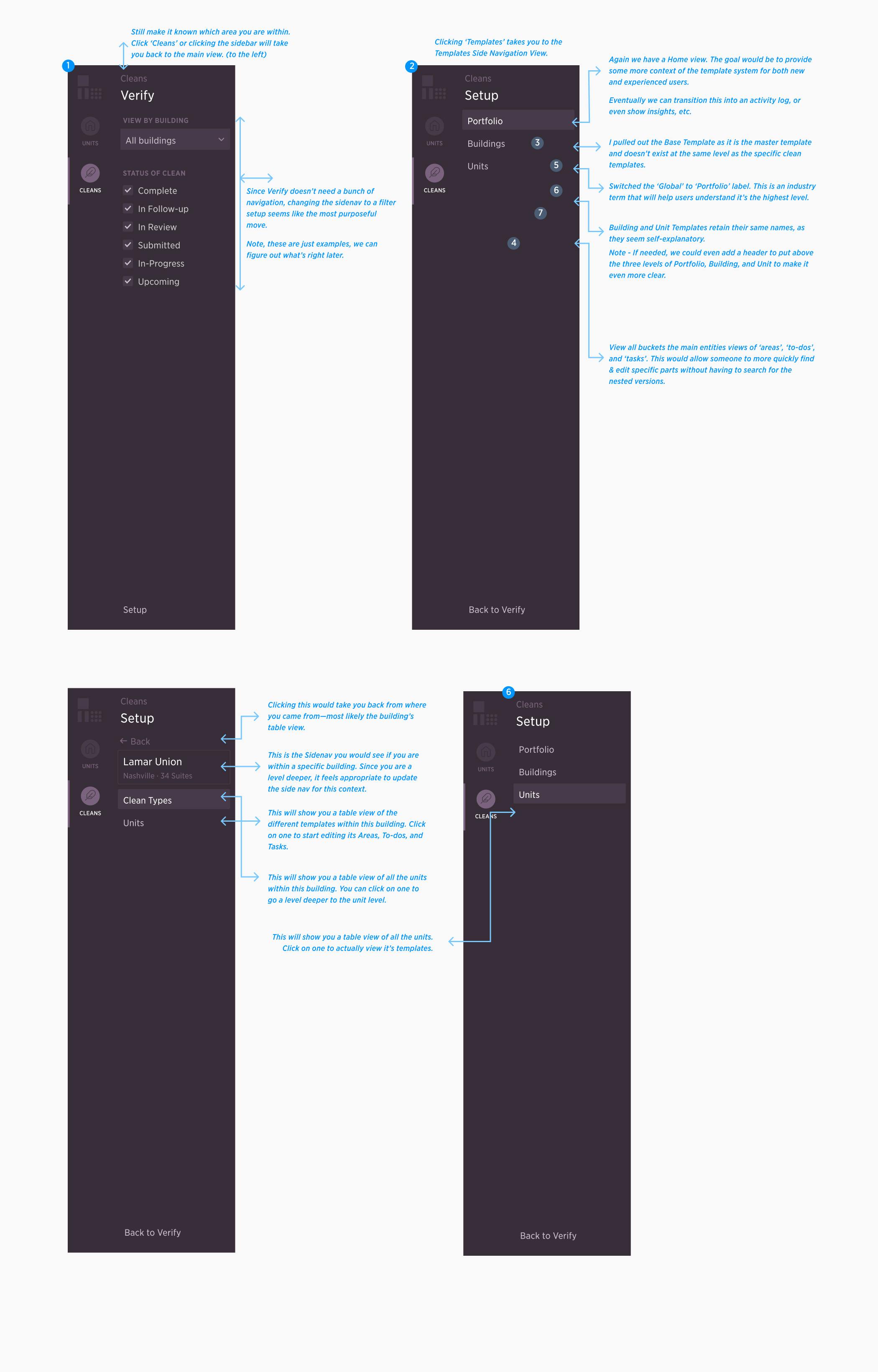

Each type of flow while setting up cleaning templates in Tidy.
Mobile On-Site Verification Application
The cleaners would be using this app while performing cleans. For those without a phone to download the app, we had one in each suite. The key elements in this app included confirming completed rooms, updating low inventory and taking photos for our operations team to verify the clean.
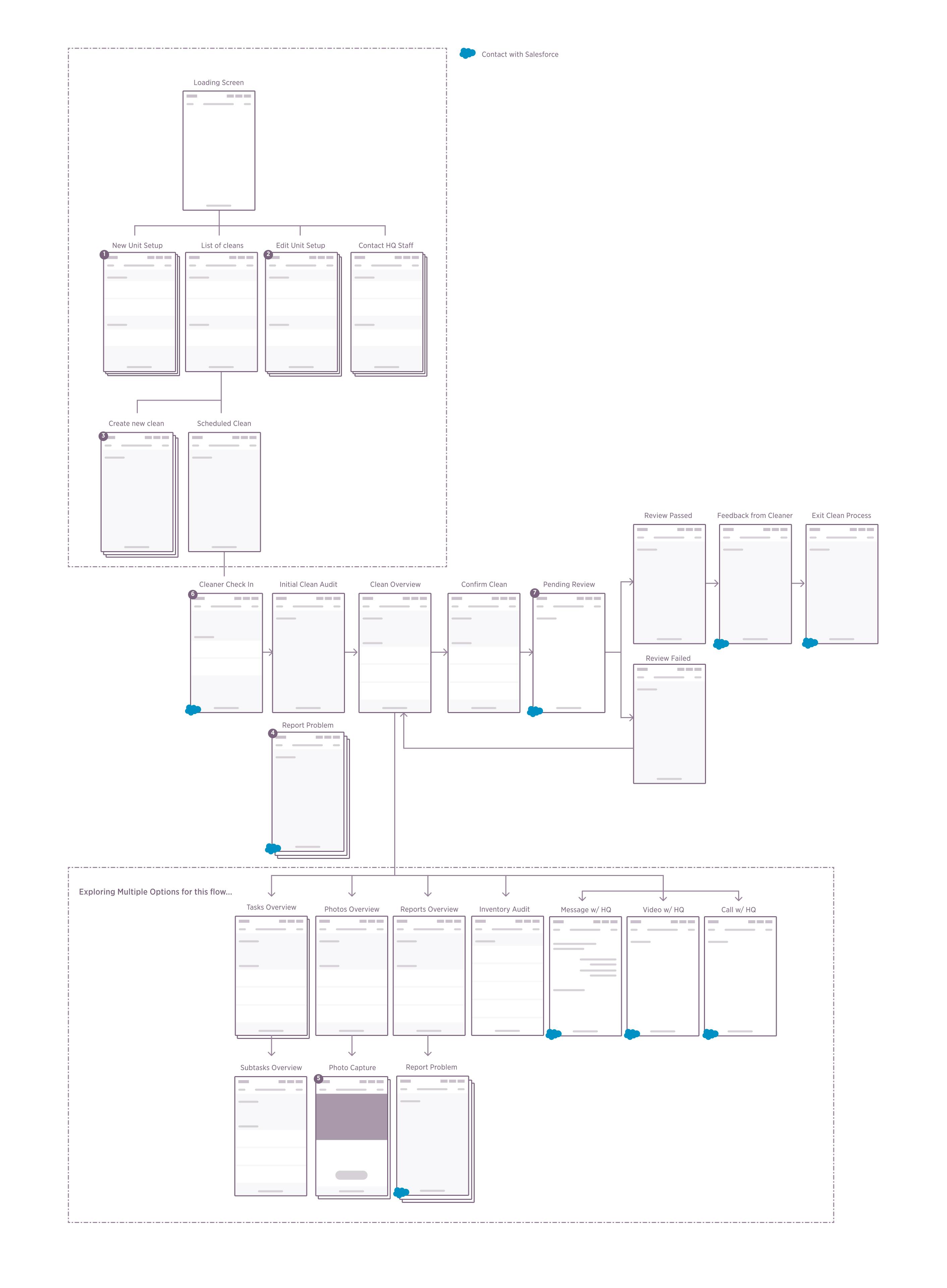
Proposed sitemap for the on-site verification application.
Next steps
Once I had all of the wireframes completed for the templating application, verification application, and on-site mobile application we started testing with the appropriate team members. We went through a number of revision cycles before we felt confident in the first version.
While we were testing a few Lyric engineers were building the foundation for Tidy. We handed off the wireframes to the engineering team while another team member started applying the Lyric aesthetic. At this point another product manager & product designer took the lead on the project and I moved onto my next assignment.



















